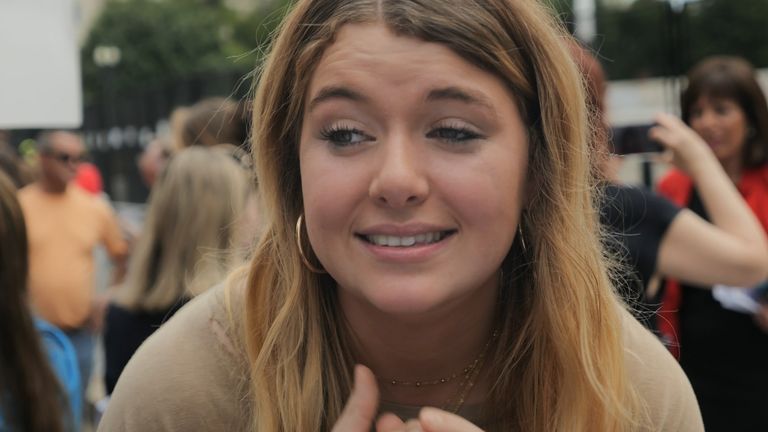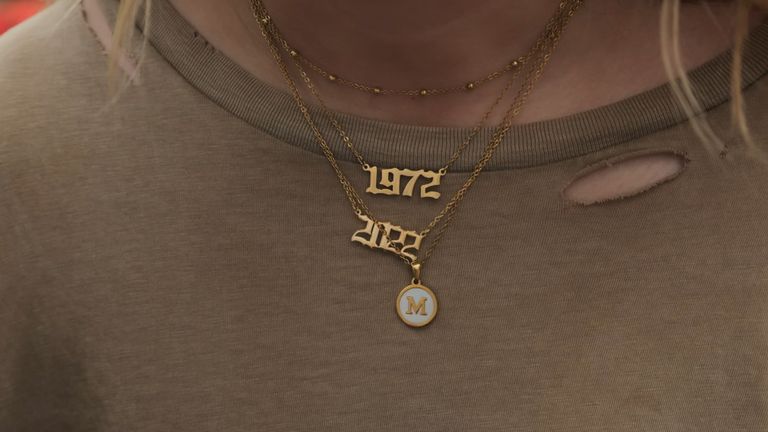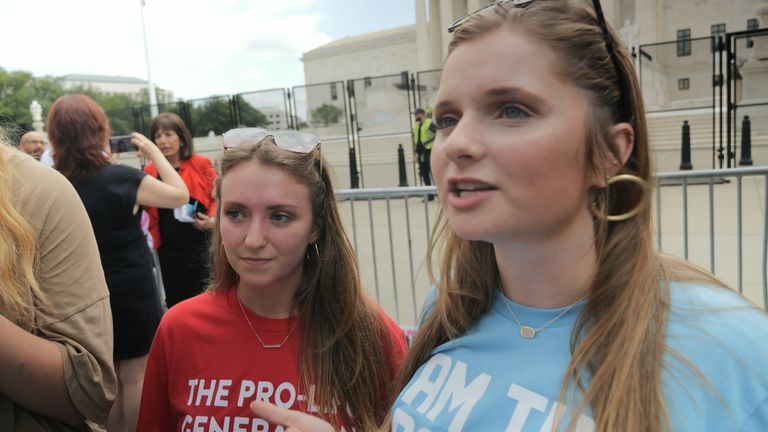Campaigners on both sides knew the judges’ likely decision, but when it came there was still a flood of emotion outside the Supreme Court.
Macy Petty, a 20 -year-old pro-life student from Rock Hill, South Carolina, had mascara running down her cheeks.
She was jumping and singing with elation and relief, waving a sign which read ‘We are the post-Roe generation’ and dancing to Queen’s Another One Bites The Dust and I Gotta Feeling (Tonight’s Gonna Be A Good Night) by the Black Eyed Peas.
Around her neck were two pendants: one with the year 1972 and the another with 2022.
“1972 was the last year before Roe”, she told me. “When there was a culture of life, and life was protected and could flourish. I ordered one from Amazon. It says 2022 because we are back to a post-Roe America.”
Her friend Alivia Talley, also 20, was beaming as she told me: “I just can’t stop thinking: thank you Jesus. I know that this is an act of God. I totally know that. And I just can’t stop thinking that.”
But metres away others were shedding tears of despair, distraught at what the ruling means for millions of women – particularly those from poorer backgrounds – across America.
They chanted “My Body, My Choice” and held placards reading “Get Rid of Roe? Hell no!”.
As the hot, humid afternoon wore on, pro-life protesters dissipated and pro-choice women arrived from their homes and offices to make their voices heard.
Among them was Morgan Folus, a young mother carrying her three-month-old son Hudson. She had decided to come to the court after watching the news, and made a placard which read: “This baby is here by choice not chance. Protect women’s rights”.
“I think it should be every woman’s right to choose”, she told me.
“Creating an abortion ban does not lead to less abortions, it leads to more unsafe abortions which could lead to more deaths.”
Read more:
Roe v Wade: How did we get here?
What happens now – and why Supreme Court may not stop at abortion rights
In a left-leaning city like Washington DC, it was perhaps inevitable that the majority of the crowd were opposed to the Supreme Court decision. Few, however, seemed to have a plan for what to do next.
This clear sense of helplessness and hopelessness is likely based on the painful reality that in the short and medium-term overturning today’s ruling is almost impossible.








